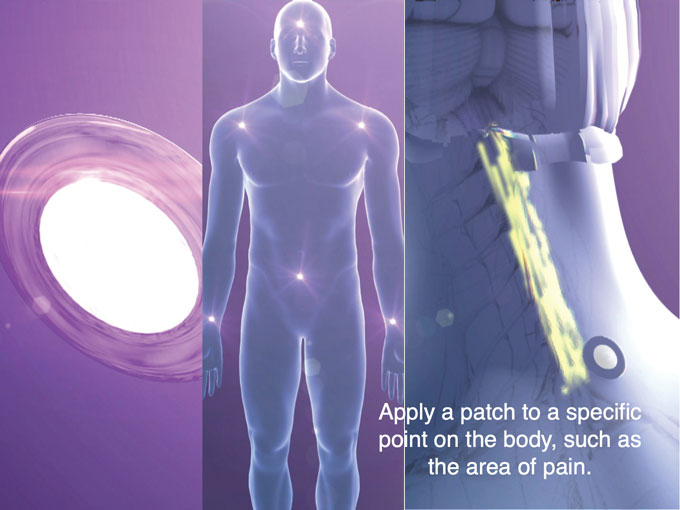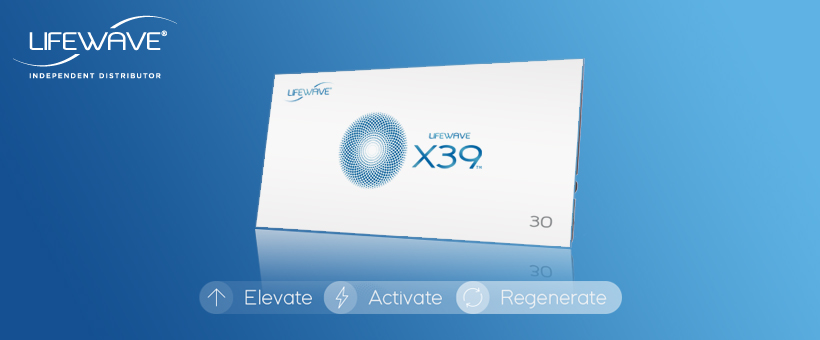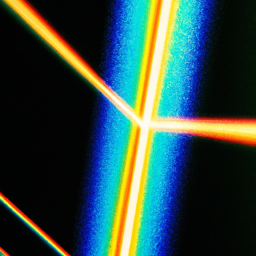Have you been struggling with acne and desperately searching for a solution that is both effective and gentle on your skin? Look no further! Infrared Light Therapy might just be the answer you’ve been looking for. This innovative treatment uses infrared light waves to target and eliminate the bacteria that causes acne, resulting in clearer and healthier skin. Say goodbye to those stubborn blemishes and hello to a complexion you can be confident about. In this article, we will explore the benefits and process of using Infrared Light Therapy for acne treatment. Get ready to embark on a journey towards clearer skin ahead!
Understanding Acne
What is acne?
Acne is a common skin condition that occurs when the hair follicles become clogged with oil and dead skin cells. It is characterized by the presence of pimples, blackheads, and whiteheads on the skin. Acne can affect people of all ages, but it is most commonly seen in teenagers and young adults.
Causes of acne
Several factors contribute to the development of acne. One of the main causes is an excess production of oil by the sebaceous glands in the skin. This oil, called sebum, can mix with dead skin cells and clog the hair follicles. Hormonal changes, such as those that occur during puberty or pregnancy, can also play a role in acne flare-ups. Other factors that can contribute to acne include bacterial infections, inflammation, and certain medications.
Types of acne
Acne can present in various forms, each with its own characteristics and severity. The most common types of acne include:
-
Whiteheads: These are small, flesh-colored bumps that occur when dead skin cells and oil clog the hair follicles, causing them to close.
-
Blackheads: Similar to whiteheads, blackheads occur when the hair follicles become clogged with oil and dead skin cells. However, in blackheads, the follicles remain open, allowing the clogged material to oxidize and turn black.
-
Papules: Papules are small, red, raised bumps on the skin. They are caused by inflammation and can be tender to the touch.
-
Pustules: Pustules are similar to papules but contain pus at their tips. They are often filled with a white or yellowish fluid.
-
Nodules: Nodules are large, solid, and painful bumps that occur deep within the skin. They are caused by the buildup of bacteria, oil, and dead skin cells.
-
Cysts: Cysts are severe forms of acne that are characterized by large, pus-filled lesions. They can be painful and often leave behind scars.
Understanding the different types of acne is crucial for determining the appropriate treatment method.
The Basics of Infrared Light Therapy
What is infrared light therapy?
Infrared light therapy, also known as photobiomodulation or low-level light therapy, is a non-invasive treatment that uses specific wavelengths of light to stimulate cellular activity in the skin. It is a safe and painless procedure that has been used for various medical and aesthetic purposes, including the treatment of acne.
How does infrared light therapy work?
Infrared light therapy works by penetrating the skin and stimulating the mitochondria, which are the powerhouses of the cells. This stimulation increases the production of adenosine triphosphate (ATP), which provides energy for cellular processes. The increased ATP production enhances cell repair and regeneration, leading to improved skin health. In the case of acne, infrared light therapy helps reduce inflammation, kill acne-causing bacteria, and promote healing.
Benefits of infrared light therapy
There are several benefits to using infrared light therapy for acne treatment:
-
Reduced inflammation: Infrared light therapy helps calm the skin, reducing redness, swelling, and discomfort associated with acne.
-
Killing acne-causing bacteria: The specific wavelengths of light used in infrared light therapy have been shown to effectively kill the bacteria responsible for causing acne.
-
Promoting healing: Infrared light therapy stimulates collagen production, which helps repair damaged skin and aids in the healing of acne lesions.
-
Non-invasive and painless: Unlike certain acne treatments that can be harsh on the skin, such as topical creams or oral medications, infrared light therapy is gentle and pain-free.
-
No downtime: After an infrared light therapy session, there is no downtime required, allowing individuals to resume their daily activities immediately.
Infrared light therapy offers a natural and effective approach to treating acne without the use of harsh chemicals or invasive procedures.
Infrared Light Therapy vs. Other Acne Treatments
Comparison with topical creams
Topical creams are a common treatment for acne, but they can often be harsh on the skin and may cause dryness, redness, or irritation. In contrast, infrared light therapy is gentle and does not cause any known side effects. Additionally, some topical creams may contain ingredients that can cause allergic reactions or interact with other medications. Infrared light therapy, on the other hand, is suitable for all skin types and can be safely used in combination with other acne treatments without any known interactions.
Comparison with oral medications
Oral medications, such as antibiotics or isotretinoin, are sometimes prescribed for severe cases of acne. While these medications can be effective, they often come with potential side effects and require regular monitoring by a healthcare professional. Infrared light therapy, on the other hand, is a non-invasive treatment that does not have the same systemic effects as oral medications. It provides targeted treatment to the affected areas without exposing the entire body to medication.
It is important to note that while infrared light therapy can be an effective standalone treatment for mild to moderate acne, severe cases may require a combination of treatments, including medications and professional interventions.
Effectiveness of Infrared Light Therapy for Acne
Studies supporting its effectiveness
Numerous studies have shown the effectiveness of infrared light therapy in treating acne. A study published in the Journal of Cosmetic and Laser Therapy found that participants who underwent infrared light therapy experienced a significant reduction in acne lesions and improved skin texture. Another study published in the American Journal of Clinical Dermatology demonstrated that infrared light therapy reduced the severity of acne in participants by targeting the bacteria responsible for acne breakouts.
Success rates and testimonials
Many individuals who have used infrared light therapy for acne have reported positive results. Success rates can vary depending on the severity of acne, adherence to treatment protocols, and individual response. However, overall, infrared light therapy has shown promising results in reducing acne lesions, improving skin tone and texture, and preventing future breakouts. Numerous testimonials highlight the effectiveness of infrared light therapy in achieving clearer, smoother, and healthier-looking skin.
While individual experiences may vary, it is advisable to consult with a healthcare professional or dermatologist to determine if infrared light therapy is the appropriate treatment option for your specific case of acne.
Choosing the Right Infrared Light Therapy Device
Home-use devices vs. professional treatments
When considering infrared light therapy for acne, individuals can choose between using a home-use device or seeking professional treatments. Home-use devices are convenient and allow for treatment in the comfort of your own home. They are generally more affordable and offer long-term cost savings compared to ongoing professional treatments. On the other hand, professional treatments, such as those performed in dermatology clinics or medical spas, provide access to more advanced and powerful devices that may yield quicker results. Professional treatments also offer the advantage of being administered by trained professionals who can tailor the treatment to the individual’s specific needs.
Factors to consider before purchasing a device
Before purchasing an infrared light therapy device for acne treatment, there are several factors to consider:
-
Wavelengths: Different wavelengths of light have varying effects on the skin. It is important to choose a device that emits wavelengths specifically targeted for acne treatment.
-
Safety features: Ensure that the device has appropriate safety measures in place, such as automatic shut-off timers and protective goggles, to prevent accidental harm or excessive exposure.
-
Treatment area coverage: Consider the size of the device’s treatment area and whether it can effectively cover the intended treatment areas on your skin.
-
Ease of use: Look for a device that is user-friendly, with clear instructions and adjustable settings to customize the treatment to your needs.
-
Quality and reliability: Research different brands and read reviews to ensure the device is of good quality and will last for a reasonable period of time.
By considering these factors, individuals can make an informed decision when selecting an infrared light therapy device for their acne treatment needs.
Safety Measures and Precautions
Possible side effects of infrared light therapy
Infrared light therapy is generally considered safe and does not have any known long-term side effects. However, some individuals may experience temporary mild redness, itching, or dryness of the skin immediately following a treatment session. These effects typically subside within a few hours or days.
Who should avoid using infrared light therapy?
While infrared light therapy is suitable for most individuals, there are some cases where caution or avoidance may be necessary. It is recommended to consult with a healthcare professional before using infrared light therapy if you:
- Have a known sensitivity or allergy to light
- Have an active skin infection or open wound in the treatment area
- Are pregnant or breastfeeding
- Have a history of skin cancer or pre-cancerous lesions
A healthcare professional can provide personalized advice based on your specific circumstances and medical history.
Consulting a healthcare professional
Before starting any new acne treatment, it is always advisable to consult with a healthcare professional or dermatologist. They can assess your skin condition, determine the most appropriate treatment plan, and provide guidance on using infrared light therapy safely and effectively. A healthcare professional can also address any concerns or questions you may have, ensuring you feel secure and confident in your acne treatment journey.
How to Use Infrared Light Therapy for Acne
Preparing the skin before treatment
To ensure optimal results, it is important to properly prepare the skin before using infrared light therapy for acne. Follow these steps:
-
Cleanse: Start by gently cleansing the skin to remove any dirt, oil, or makeup. Use a mild cleanser suitable for your skin type.
-
Exfoliate (optional): If recommended by your dermatologist, exfoliate the skin using a gentle scrub or exfoliating product to remove dead skin cells and unclog the pores. Be cautious not to over-exfoliate, as this can irritate the skin.
-
Pat dry: Gently pat the skin dry with a clean towel, avoiding any harsh rubbing.
Recommended treatment schedule
The frequency and duration of infrared light therapy sessions for acne can vary depending on the individual and the severity of the acne. It is best to follow the treatment plan recommended by your healthcare professional or the guidelines provided with the infrared light therapy device. In general, a typical treatment schedule for acne may involve several sessions per week, with each session lasting around 15 to 30 minutes. Consistency is key in achieving optimal results, so it is important to adhere to the recommended treatment schedule.
Combining Infrared Light Therapy with Other Acne Treatments
Complementary skincare products
Infrared light therapy can be combined with complementary skincare products to enhance its effectiveness. Using gentle cleansers, non-comedogenic moisturizers, and oil-free sunscreen can help maintain the health of the skin and prevent clogged pores. Adding products containing ingredients like salicylic acid or benzoyl peroxide may also be beneficial in targeting acne-causing bacteria and unclogging pores. However, it is important to introduce new products gradually and monitor how your skin reacts to ensure they do not cause any irritation or allergic reactions.
Dermatologist recommendations
If you are considering combining infrared light therapy with other acne treatments, it is best to consult with a dermatologist. They can assess your specific acne condition and recommend a personalized treatment plan that may include a combination of treatments. A dermatologist can also guide you on the timing and order in which to incorporate different treatments, ensuring they work synergistically to address your unique skin concerns.
Maintenance and Long-term Results
Incorporating infrared light therapy into a skincare routine
To maintain the benefits of infrared light therapy and prevent acne recurrence, it is important to incorporate it into a regular skincare routine. This includes:
-
Continued use of infrared light therapy: Follow a maintenance schedule recommended by your healthcare professional or device manufacturer to ensure long-term results.
-
Cleansing: Cleanse the skin daily to remove impurities and prevent clogged pores.
-
Moisturizing: Use a non-comedogenic moisturizer to keep the skin hydrated and balanced.
-
Sun protection: Apply a broad-spectrum sunscreen with at least SPF 30 daily to protect the skin from damaging UV rays.
By consistently following a skincare routine that includes infrared light therapy, individuals can help maintain clearer, healthier-looking skin.
Preventing acne recurrence
In addition to incorporating infrared light therapy into a skincare routine, there are several ways to prevent acne recurrence:
-
Avoid touching your face: Keep your hands away from your face to minimize the transfer of bacteria and oil.
-
Cleanse after sweating: If you engage in activities that make you sweat, such as exercise, ensure to cleanse your skin afterward to remove sweat and oil buildup.
-
Avoid harsh skincare products: Steer clear of harsh scrubs, abrasive cleansers, and products that contain irritating ingredients that may worsen acne.
-
Follow a balanced diet: Consume a diet rich in fruits, vegetables, lean proteins, and whole grains. Limit consumption of processed foods, sugary snacks, and dairy products, as these can potentially contribute to acne breakouts.
-
Manage stress: Stress can worsen acne. Engage in relaxation techniques such as yoga, meditation, or exercise to help manage stress levels.
By adopting a holistic approach to skincare and making healthy lifestyle choices, individuals can help reduce the likelihood of acne recurrence and maintain clearer skin in the long term.
Frequently Asked Questions
Is infrared light therapy painful?
No, infrared light therapy is not painful. It is a gentle and non-invasive treatment that should not cause any discomfort during or after the session. Some individuals may experience a slight warming sensation on the skin, but this is generally well-tolerated and subsides quickly.
Can infrared light therapy be used for other skin conditions?
Yes, infrared light therapy has shown effectiveness in treating various skin conditions, including rosacea, psoriasis, and wrinkles. The specific wavelengths of light used in infrared light therapy can target different skin concerns and stimulate cellular activity for overall skin health improvement.
Can infrared light therapy be used on sensitive skin?
Yes, infrared light therapy can be used on sensitive skin. It is a gentle treatment that does not cause the same irritation or side effects as some other acne treatments, such as harsh topical creams or oral medications. However, as with any new treatment, it is always advisable to perform a patch test or consult with a healthcare professional or dermatologist before starting infrared light therapy, especially if you have a known sensitivity or history of adverse reactions.





